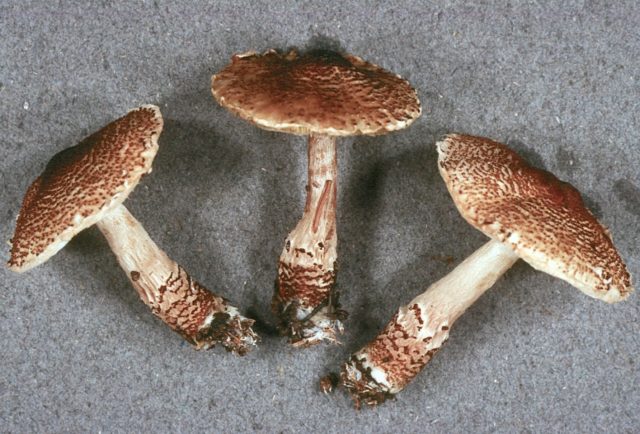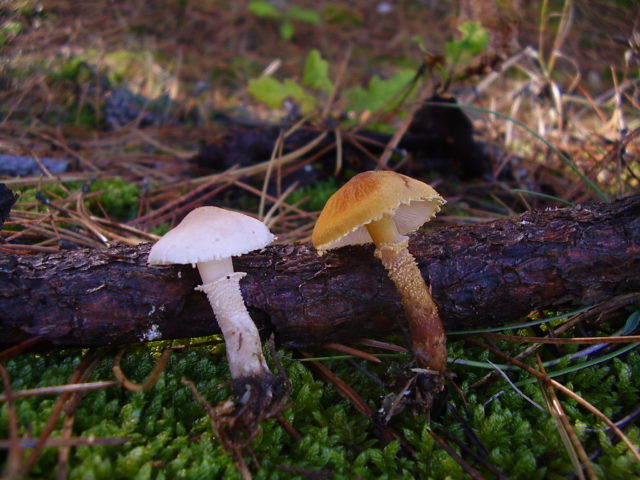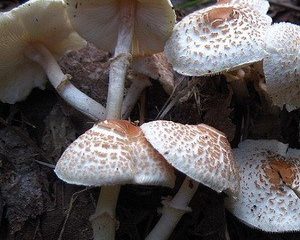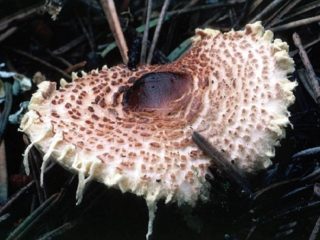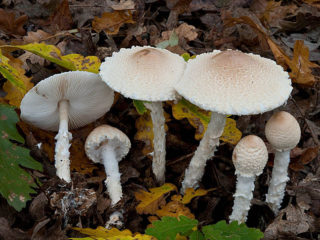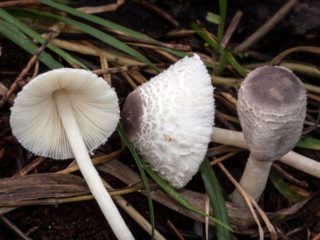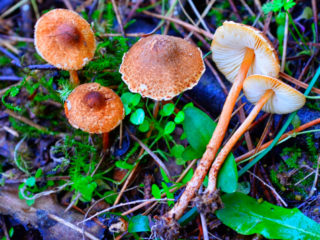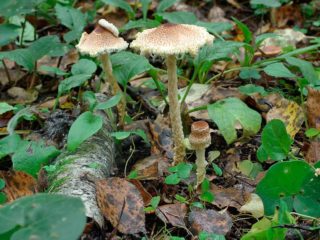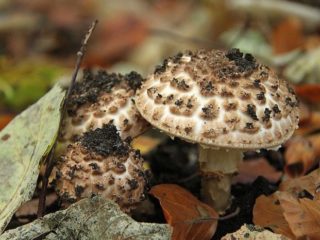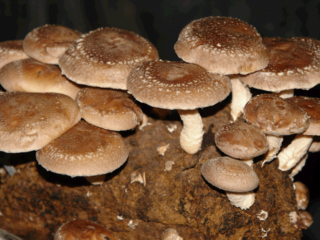Content
Lepiota squamata is a type of poisonous mushroom belonging to the Champignon family. People may call it an umbrella mushroom.
What do Lepiotis squamosus look like?
This mushroom has a small cap with a convex or flat-spread shape. In Lepiota scalata, it is distinguished by a slightly lowered, sometimes bent inward frame, whose color is similar to weathered meat.
From above, this surface is entirely covered with scales, like concentric circles converging towards the center.
Under the cap of the lepiota there are loose wide plates. Their color is creamy, slightly greenish. The spores of the fungus are ovoid and completely colorless.The stalk of the poisonous plant is low, cylindrical in shape, with fibrous remains located from the ring in the center. The flesh is dense, the stem and cap are cream-colored at the top, and cherry-colored at the bottom.
Young lepiota smells like fruit, old mushroom smells like bitter almonds. The ripening period occurs from mid-June and continues until the end of September.
Where do Lepiots squamosus grow?
Lepiota scaly grows in North America and Europe, Ukraine, southern Russia and the countries of Central Asia. It is a saprophyte that lives both on the soil and inside plant debris. Because of this, the mushroom is quite widespread across continents.
You can meet this variety in the following places:
- forest or meadow;
- park lawn;
- trees;
- straw;
- processed wood;
- dry palm branches.
Is it possible to eat lepiotes scaly?
Lepiota squamosum can easily be confused with Cystoderma deceptive, which is allowed to be eaten. An umbrella mushroom is distinguished from an edible one by the presence of scales that merge in the center (forming a closed cover). They are absent from the edible analogue. Also, its leg does not contain a film ring.
For this reason, you should be extremely careful when picking mushrooms. If you are not sure, it is better to refuse any tasting. Lepiota scalata is a highly poisonous mushroom, which contains cyanides and nitriles. These are very dangerous substances for which there are no antidotes.
Cyanides cause damage to the central nervous system, as well as the brain, while nitriles lead to respiratory paralysis.The concentration of poison in Lepiota squamosus is low. But it is enough to cause poisoning, so the mushroom is dangerous even if its spores are inhaled.
Symptoms of poisoning
After the lepiota squamata mushroom is eaten, signs of poisoning are observed quite quickly (after 10 minutes). Once in the digestive system, toxins enter the bloodstream. The victim vomits profusely, and transparent or white foam may also appear on the lips. This is caused by massive rupture of the alveoli of the lung tissue.
The temperature rises. Sometimes bluish spots form on the skin. The person has difficulty breathing. Limbs may not work due to damage to the central nervous system. After half an hour, cardiac arrest is likely.
First aid for poisoning
In case of poisoning with lepiota squamata, self-medication should not be carried out. If minor symptoms of illness occur after eating an umbrella mushroom, you should urgently call an ambulance or take the patient to the hospital yourself.
Since the main provocateur of lepiota scalata poisoning is its toxins that have penetrated into the blood, the first priority emergency measure will be the removal of those substances that have not had time to be absorbed by the circulatory system.
This activity is recommended to be performed in several ways:
- immediately rinse the stomach after lepiota poisoning with boiled water (minimum 1 liter) or a light solution of potassium permanganate, then press with two fingers on the base of the tongue, provoking vomiting;
- drink any sorbent at a rate of at least 0.5 g for each kilogram of body weight;
- when there is no diarrhea, it is better to drink a laxative in a dose of 1 g for each kilogram of weight in two doses;
- to prevent the risk of blood flow disturbances, apply heat to the peritoneum and legs;
- drink strong tea all the time.
Treatment of poisoning with lepiota squamosus is carried out by toxicology departments. Wellness activities include the following:
- gastric lavage using a thick probe;
- taking a saline laxative;
- implementation of forced diuresis.
In case of poisoning with lepiota squamata, drugs are also used, the dosage of which and the frequency of administration are prescribed by the doctor. If necessary, hemosorption using a carbon column is used. Also during treatment, measures are taken to stop further damage to internal organs.
Severe poisoning with lepiota squamosus provokes chronic renal and liver failure, which requires transplantation of these organs. Such poisoning by pregnant women is dangerous, since toxins can penetrate the placental barrier, damaging the fetus, causing miscarriage or premature birth.
Conclusion
If you are surrounded by experienced mushroom pickers, then it is better to show them the picked mushroom and make sure that it is not Lepiota scaly. Mushrooms are a healthy and tasty product, from which it is easy to prepare many dishes and even be used for medicinal purposes. But before you go into the forest, you need to carefully study the information about the differences between poisonous specimens and edible analogues.
